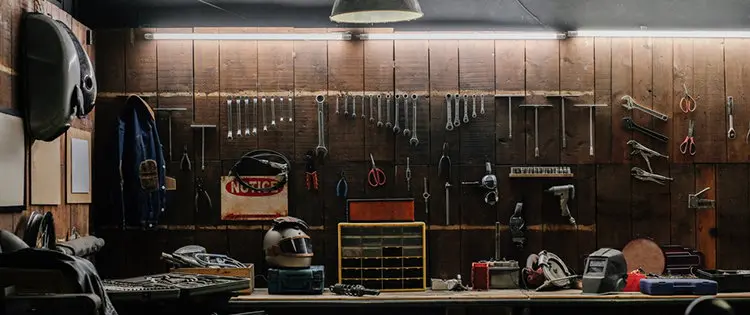This article features the most common tools needed for basic home maintenance things like hanging pictures, wiring main plugs, cutting and fixing sections of timber, and doing basic plumbing along with tightening screws, loose nuts, and power sockets.
Knowing these tools will help save time and money with your DIY projects. It will also help you know what to look for and know which questions to ask at the hardware store. The tools can be purchased when you need them and the toolkit put together over time.
So, what are the best tools recommended for your own homesteading toolkit?
Hammers
- A claw hammer is used for hammering nails and pulling them out. Claw hammers come in different sizes. A standard hammer head weighs 1 lb. and lighter ones known as tack hammers are used for smaller gauge nails.
- A builder’s hammer has a heavy head and is used for breaking bricks or blocks, chopping concrete when used with a cold chisel, and driving large nails.
- A sledgehammer is a two-handed, heavy hammer used to break concrete, drive posts into the ground, and perform similar heavy-duty jobs.
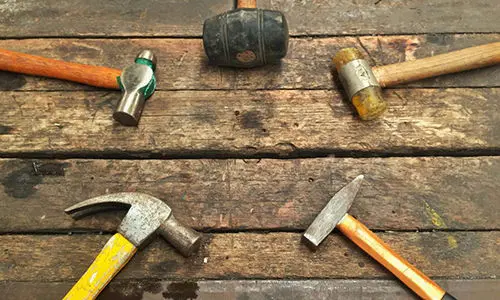
Screwdrivers
- Several different sizes of both flathead screwdrivers and Phillips screwdrivers can be individually bought or as a set.
- A screwdriver handle with a tip with various screwdriver bits and a cordless drill/driver combination that comes with various screwdriver bits come in handy, no matter the project.
- An awl comes with some screwdriver sets and is used to make holes before drilling or driving screws.
Related: Are You A DIY-er?
Pliers
- Standard pliers are used to undo, hold, pull, bend, and twist small nuts.
- Long nose pliers are used to bend the ends of wires, hold parts, and help with electronic/electrical work. They can reach more places than standard pliers.
- Locking pliers are known by the brand name Mole wrench or Vice Grip. They can be used to hold anything that needs turning (e.g., bars, bolts, nuts, etc.) and as a general-purpose clamp to hold together two parts.
- Side-cutters are used for cutting and stripping the insulation from wires when wiring lighting, socket outlets, and plugs. They can also be used to snip light-gauge netted wire and tie wire as well as to snip cable ties.

Saws
- A standard carpenter’s hand saw cuts lumber.
- A tenon saw has finer teeth and is smaller than a standard saw. It can be used for neater cutting.
- A junior hacksaw is used to cut small pieces of copper and plastic tubing, bolts, and other light metal parts. It uses disposable blades.
- A miter box is used to make angled, neat cuts on the end of the baseboard, architrave, or other timber (up to 2X4 in cross-section).
- A hand saw is used for cutting the odd length of timber without using power tools and an extension lead.
Measuring Tape
- A small, compact 10-foot tape fits inside a pocket so you can measure things while shopping.
- A 20-foot measuring tape is used for assorted general projects.
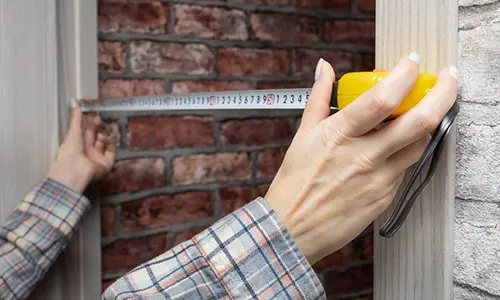
Wrenches
- Open-ended or combination wrenches can undo nuts when the threaded section of the bolt extends beyond the nut to fit into a socket.
- Adjustable wrenches have jaws to adjust for larger nuts and bolts. They can be less expensive than buying a larger fixed-size wrench.
Note: For work around the house, look for ¾ inch AF (across the flats) or smaller.
- Pipe wrenches and water pump pliers are useful tools to help with dismantling taps and radiator valves, and unscrewing and tightening pipes, plumbing fittings, and large nuts. Since the jaws and handles of a water pump pliers aren’t lined up, it is easier to access and turn nuts, etc. so there is less obstruction if you need to get near a wall or into a small space.
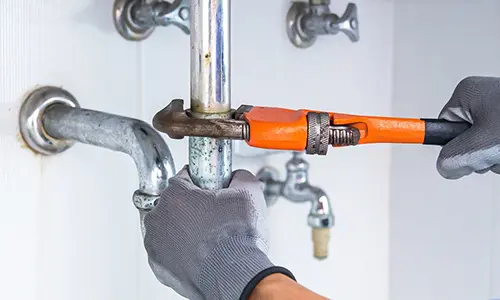
Ladders
- An extension ladder gives you the height you need to cut limbs from trees, clean outside windows, paint your house, and access top gutters, etc.
- A step ladder is a great tool for general maintenance in and out of your house. It can help with cleaning low-level gutters, cleaning spiderwebs, painting, watering hanging baskets, cutting hedges, cleaning windows, etc. It is safer to use than a stool or chair because there’s a top bar to hold onto if you need extra balance.
Related: How To Build A Small Storage Shed From Pallets
Flashlights
- High-powered LED flashlights produce a lot more light and last much longer than traditional flashlights with incandescent bulbs.
- A head flashlight is helpful, especially when you need to have both of your hands free.

Drills
- A cordless drill is needed to drive lots of screws and is faster and more powerful for drilling large holes. Most 18-volt drills can be used for drilling and driving screws into hard surfaces, even concrete.
- SDS drills can rapidly drill holes in masonry for wall plugs. They help drill larger holes in concrete if you are running cables or plumbing tubing. Corded versions are cheaper but more inconvenient because of the power cord.
- Assorted drill bits are needed to make holes in metal, plastic, wood, and concrete/bricks/stone. High-speed steel (HSS) drill bits are hardwearing and designed for drilling into metal and plastic surfaces. Assorted wood bits are used for timber (e.g., flat bits, lip and spur bits, auger bits, etc.). Masonry bits are used for drilling concrete/bricks, and stone.
Paint Brushes
The most useful paint brush sizes are ½ in., 1 in., 1½ in., and 2 in. for all types of painting jobs. A larger brush (5 to 6 in. wide) is used for painting walls.
Better quality brushes have more fine bristles than cheaper brushes. These brushes hold paint better and stop it from running back toward the handle of the brush.
Consider buying mid-quality brushes. They will last several years if you keep them clean. A roller saves time if you have larger surfaces that need painting.
Related: 8 Solar Powered Items You Should Have on Hand
Metal Detector/Stud Finder and Live Wire Detector
- Used to find live wires and metal in walls before drilling, some detectors include a stud finder option to help find studs.
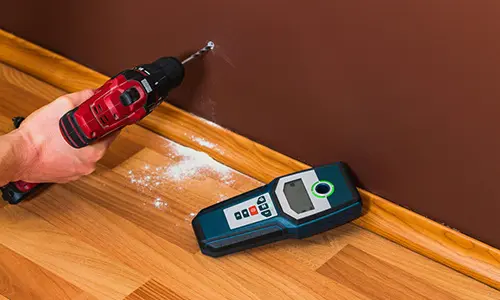
Utility Knives
Utility knives with disposable blades known generically as “Stanley knives”
- Manufactured by Stanley, utility knives have numerous uses. The most common kind has retractable blades but there are folding types as well.
Voltage Testers
A digital multimeter (DMM) measures the current/voltage and tests the continuity of wires and fuses. A DMM also checks batteries.
- A screwdriver phase tester or non-contact voltage tester can detect whether electrical parts or cables are “live.”
Tippex Marker
- A tippex marker is used for marking dark surfaces. It produces a prominent white line.
Essential Materials and Fixings
- It’s also a good idea to stock up on essential materials and fixings such as nails, wood screws, wall plugs, assorted nuts, bolts, washers and machine screws, insulating tape, spare blades for a utility knife, super-glue, epoxy resin, and cable ties, etc.
You may also like:
 Cheap Concrete For Your Projects: Papercrete
Cheap Concrete For Your Projects: Papercrete
Easy to Build Root Cellar in Your Own Back Yard (Video)
10 Things To Have Ready Before An EMP
Survival DIY Projects You Can Start on Your Property Right Now

